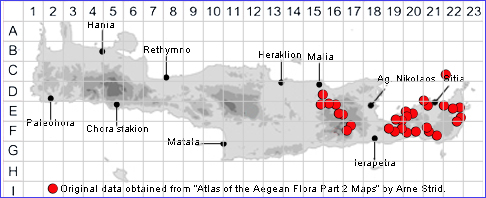HYPERICUM AMBLYCALYX
Family and Genus:- See- GUTTIFERAE/Sect. CORIDIUM
Common Names:- None
Homotypic Synonyms:- Hypericum quadrifolium
Meaning:- Hypericum (Gr) Above-pictures. A name used by the Greek physician
and botanist Dioscorides for its use over shrines to repel evil spirits.
Amblycalyx (Gr) With a blunt calyx.
General description:- Perennial, many-branched.
Stems:-
1) Up to 50 cm, erect and caespitose with strict branching, or procumbent,
straggling and rooting.
Leaves:-
1) Simple, opposite 2-12 mm, linear to lanceolate in whorls of 4, glabrous.
Flowers:-
1) Yellow, in elongated panicles or simple cymes, or solitary.
2) Sepals, sessile, with entire, eglandular margins.
3) Petals, and stamens deciduous.
Fruit:-
1) Capsule, with oblique vesicles.
Key features:-
1) Plant, without red or black glands on the leaves.
2) Leaves, in whorls of 3-4, smooth.
3) Petals, and stamens deciduous.
Click here for a glossary of terms used.
Habitat:- Crevices and ledges of limestone cliffs, rocky road embankments with
open dry shrubby vegetation, outcrops in open coniferous woodland. 0-1100 m.
Distribution:- Endemic E. Crete. Where it is fairly common.
Flowering time:- Mid-Mar to early June.
Photos by:- Steve Lenton
Status:-
Conservation status (for threatened species): Rare (R) according to IUCN 1997.
Protection status (for threatened species): Greek Presidential Decree 67/1981.
SPECIES DESCRIPTION

